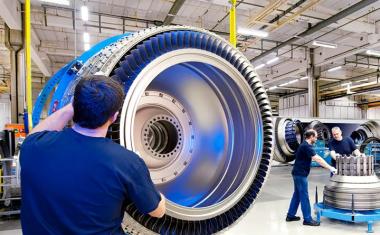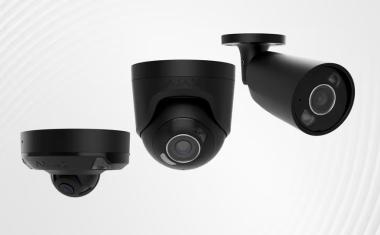Why Door Closers Matter in Smart Buildings
Smart buildings take a connected approach to managing and monitoring who is coming into and going through them. For almost every user, whether visitor, staff or contractor, the building journey begins with a door. The door closer, however, is an easy element to overlook.

A 2025 report by analysts Memoori suggests that the global IoT market in commercial buildings will grow to $101 billion (€87.5 billion) by 2030, at a baseline predicted CAGR of 7.9%. Memoori identify offices, retail premises, data centers, and hospitality businesses as probable early adopters of smart building technology. The smart building will streamline the experience for both users and managers. When fully implemented, it promises buildings which are more secure; that make better use of energy; and which will make data-driven decisions in real time. On the basis of these concrete benefits, analysts forecast rapid growth. According to Fortune Business Insights, the market will grow from a value of $143 billion (€122 billion) in 2025 to $548.5 billion (€469.5 billion) by 2032, at an estimated 21.2% CAGR. Security systems and technologies will be a significant component of this growth.
In a world of smart sensors, building management dashboards and real-time analytics, the door closer is an easy element to overlook. Yet in creating tomorrow’s generation of intelligent buildings, this device will play a critical role. Modern high-spec door closers do far more than simply shut a door; they help to preserve climate zones, reduce noise, support fire safety and accessibility, as well as enhance security and convenience throughout the building.
The door closer is essential for security. A door left ajar – whether by wind, human error, or wear and tear – undermines access protocols and protections. Intelligent closers work alongside digital locking and access systems to ensure that doors shut reliably behind every authorized user, reducing the risk of tailgating. A certified door closer is also a key component in fire safety strategy. When integrated with fire alarm systems, closers allow fire doors to remain open during normal use, but they will close automatically in an emergency. This ensures safer evacuations and regulatory compliance without compromising on day-to-day convenience.
The contribution is also tangible from a sustainability standpoint: a closed interior door helps to maintain temperature differentials between an office and the corridor, for example, or a server room and an atrium exposed to climate variations. Fully closed interior doors help to reduce stack pressure – the unwanted inflow of air at lower levels caused by rising warm air within the building – which can otherwise disrupt HVAC performance.
Even a single poorly closed door can force HVAC systems to work harder, leading to unnecessary energy waste. A door closer ensures that these doors shut gently but securely every time, helping to improve energy efficiency metrics.
In a connected building, integration is everything. Assa Abloy intelligent door closers are designed to work as part of a broader building management system (BMS). They integrate seamlessly with access control, fire alarm, and HVAC platforms, helping the building to become more responsive, more secure, and more efficient.
Andreas Gmelin, Product Management and Business Development Director at Assa Abloy Opening Solutions EMEIA, says, “Every model in our range of award-winning door closers is engineered for performance, durability and aesthetics. As you would expect, they meet or exceed critical EN 1154 compliance requirements and in most cases, are certified for use on fire doors, Increasingly, they are also designed from the ground up paying attention to their growing role within an intelligent building environment. They can be responsive and be used together with other components in a smart building, assisting with access, energy, and life safety. In short, they are no longer just robust, convenient hardware working in isolation to perform a single important task. Door closers are now a key enabler of improved smart building performance, which benefits every user and makes life easier for building managers.”
The company’s website provides more detailed information about the Assa Abloy door closers, and how they can benefit your building:
https://www.assaabloy.com/group/emeia/solutions/topics/door-closers















